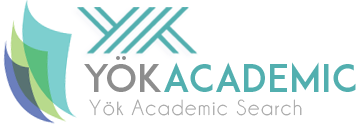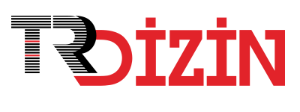Research Article
Case Report
Review
Issue Editorial Board
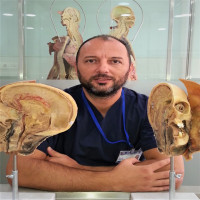
Education:
Expertise at Ege University Faculty of Medicine, Anatomy Department (1997- 2001)
License in Medicine at Erciyes University Faculty of Medicine (1989-1996)
Status:
• Professor in Anatomy (since 2013)
• Lecturer at Ege University
o Faculty of Medicine
o Faculty of Dentistry
o Faculty of Nursing
o Faculty of Health Sciences
• Editor-in-Chief of Ege Journal of Medicine
• Director of Ege University Interventional Anatomy and Plastination Research Center
• Member of Animal Experiments Local Ethics Committee of Ege University
• Member of The International Society for Plastination
• Member of Society of Turkish Anatomy and Clinical Anatomy
Experiences:
• Postgraduate education and clinical/surgical anatomy trainings
• Plastination of anatomical and pathological specimens
• Embalming and fixation procedures
• Vascular and Neuro-muscular anatomy
• Anatomical imaging and 3D imaging
Languages:
Turkish (Native), English (Upper-intermediate), German (Basic user), Spanish (Beginner)
Special interests:
Bird watching, wildlife photography, sailing, gardening.




Institution Information
Faculty/Institute/Unit: Faculty of Medicine
Department: Department of Surgical Medical Sciences
Main Branch: Department of Anesthesiology and Reanimation
International Researcher IDs
ORCID: 0000-0003-2665-3467
Yöksis Researcher ID: 162523
Research Areas
Health Sciences, Anesthesiology, Surgical Medical Sciences, Medicine
Health Sciences Core Area
Anesthesiology and Reanimation
Metrics
Number of Publications: Unisis: 83
Number of Citations: Unisis: 197
Average Number of Citations: Unisis: 2.37
H-Index: Unisis: 8
Educational Information
1. Medical Specialization, 1998 - 2004, Ege University, Faculty of Medicine, Surgery Department of Medical Sciences, Turkey, Turkish
2nd Bachelor's Degree, 1990-1996, Ege University, Faculty of Medicine, Turkey, Turkish
Certificates, Courses, and Training
1st Regional and Outpatient Anesthesia, 2014, Education Management and Planning, St. George University Hospital Anesthesiology Department, LONDON-UK
Theses
1st Medical Specialization, 2004, EFFECT OF NEUROMUSCULAR BLOCKAGE ON OXYGEN AND ENERGY CONSUMPTION IN PATIENTS WITH ACUTE RESPIRATORY FAILURE UNDER MECHANICAL VENTILATORY, Ege University, Faculty of Medicine, Department of Anesthesiology and Reanimation, Turkey
Academic Titles / Positions
1st Prof. Dr., 2022 -
, Ege University, Faculty of Medicine, Department of Surgical Medical Sciences, Department of Anesthesiology and Reanimation, Turkey
2nd Assoc. Prof. Dr., 2014 - 2022, Ege University, Faculty of Medicine, Department of Surgical Medical Sciences, Department of Anesthesiology and Reanimation, Turkey
3rd Specialist Dr., 2004 - 2014, Ege University, Faculty of Medicine, Department of Surgical Medical Sciences, Department of Anesthesiology and Reanimation, Turkey
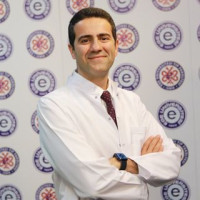
Fuat Kızılay graduated from Ankara University Faculty of Medicine in 2005. He started his residency at Ege University Faculty of Medicine, Department of Urology in 2006 and completed it in November 2011. After working in public hospitals for 4 years, he started to work in the Department of Urology at Ege University Medical Faculty Hospital in January 2016 and received the title of associate professor in 2021. He passed the European Urology Board exam in June 2016 and received the title of FEBU (Fellow of the European Board of Urology). He is associate professor at Ege University Faculty of Medicine. He is mainly interested and competent in the fields of robotic surgery, laparoscopic surgery and urooncology. Fuat Kızılay, who has a total of 223 publications, 138 national and 85 international, has 480 citations. H-index is 11.

Assoc. Prof. Dr. Gökay Özçeltik is a faculty member at Ege University Faculty of Medicine, Department of Surgical Medical Sciences, Division of Obstetrics and Gynecology. He completed both his medical education and specialty training at Ege University. His main fields of interest include urogynecology, minimally invasive surgery, and transvaginal endoscopic surgery (vNOTES).
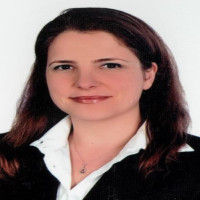
.
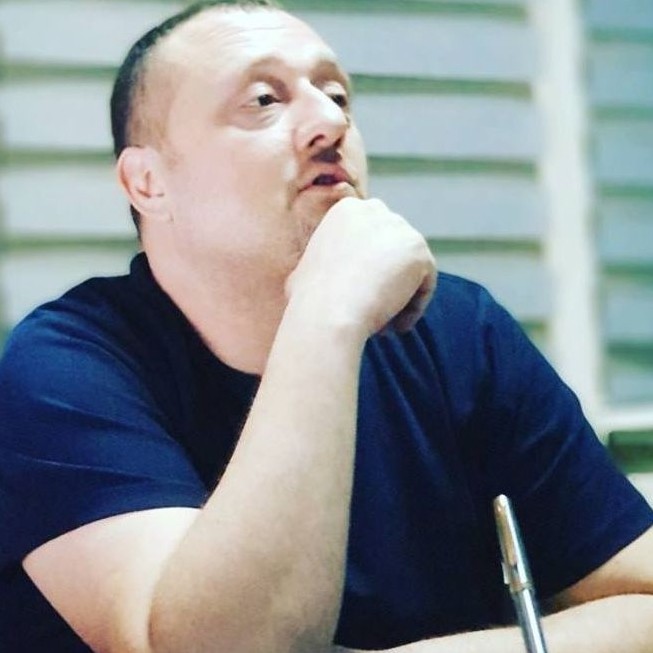

Assoc. Prof. Dr. Ayşe Güler continues her work within the Ege University Faculty of Medicine, Department of Neurology. With many years of professional experience, Assoc. Prof. Dr. Güler has focused on various subjects within the field of neurology. Main Clinical Interests and Specializations: Cerebrovascular Diseases: She is an expert in cerebrovascular occlusion, cerebral hemorrhage, and hemorrhage related to aneurysms. She has numerous national and international studies in this field.Neurological Emergencies and Intensive Care: She is experienced in the management of neurological intensive care processes and neurological emergencies. Motor Neuron Disease: She is experienced in the monitoring and treatment arrangement for patients diagnosed with motor neuron disease.Other Areas: Her areas of expertise also include the follow-up of patients with headaches, dizziness, changes in consciousness, and epilepsy (seizures).

was born in Erzincan on September 25, 1970, the third child of Vehbi and Hatice Işıkgöz. I attended Atatürk Elementary School. I extend my sincere gratitude to my beloved teacher, Nadide Gerçek. After Cumhuriyet Middle School, I graduated from Erzincan High School in 1987. I was accepted into Erzurum Atatürk University Faculty of Medicine. I graduated in 1993. That same year, in October, I began working in the Erzincan Mother and Child Health Department. I met my husband, Mehmet Sezai Taşbakan, there. We married in 1995.
In 1998, I began my residency in the Department of Infectious Diseases and Clinical Microbiology at Ege University Faculty of Medicine. I became a specialist in 2003 and an associate professor in 2008. I earned the title of professor on December 25, 2014. I have two daughters, Selin Ece and Defne.
Aim & Scope
Ege Journal of Medicine is the official journal of Ege University Faculty of Medicine with four issues published quarterly in March, June, September and December to complete a volume. Its purpose is to publish high-quality original clinical and experimental studies in all fields of medicine.
The Aegean Journal of Medicine publishes supplementary issues upon request. The supplementary issue is published electronically only twice a year. The language is Turkish and English.
The Aegean Journal of Medicine provides open access to scientific publications. Once a DOI number is assigned, the electronically published issue and the full text of the articles included therein can be accessed free of charge.
Author(s) are not charged any fees for the publication of their articles.
Ege Medical Journal is a general medical journal and publishes qualified clinical and experimental researches, case reports, clinical images, technical notes, letters to the editor and invited reviews.
Author Guidelines
EGE JOURNAL OF MEDICINE
Information for Authors
Ege Journal of Medicine is the official journal of Ege University Faculty of Medicine with four issues published quarterly in March, June, September and December to complete a volume. Its purpose is to publish high-quality original clinical and experimental studies in all fields of medicine.
Manuscripts submitted to the journal web site will be pre-evaluated by the editor-in-chief or an editor. The submissions found suitable at the pre-evaluation stage will proceed to the evaluation stage, while manuscripts not conforming to the submission guidelines will either be returned to the responsible author for correction or might be re-formatted or rejected. During the evaluation stage, the editor-in-chief or editor will invite relevant experts (reviewers) of the field to review the manuscript. The review process is conducted as double blind. When required, the responsible author might be requested to make revisions according to the suggestions by the reviewers and editor. A request to revise the manuscript does not mean that the article will be published. Revised manuscripts are required to be sent to the Editorial Office within 21 days. The responsible author will be informed on whether the article is accepted or rejected.
Whether accepted for publication or not, all manuscripts submitted to the system will be kept in the archive.
Supplement: If requested, Ege Journal of Medicine publishes Supplements. The scientific evaluation of the manuscripts that will be published in the Supplement is under the responsibility of the guest editor(s) of the Supplement. The manuscripts of the Supplement should be prepared according to the author guidelines of the journal. Conformity to the guidelines will be checked by the editor-in-chief or editorial board of the journal. The Supplements will be published only electronically.
Open Access and Article Processing
Ege Journal of Medicine provides open access for academic publications. The journal provides free access to the full texts of all articles immediately upon publication.
The journal does not request any charges for article processing or article submission.
There is no charge for readers to download journal contents for their own scholarly use. The journal is free to all at any time. To provide this the journal relies on financial resources of Ege University, the voluntary work of its editorial team and advisory board, and the continuing support of its network of peer reviewers.
Copyright
Ege Journal of Medicine enables the sharing of articles according to the Attribution-Non-Commercial-Share Alike 4.0 International (CC BY-NC-SA 4.0) license. Thus, the authors and readers can copy, multiply and adapt the published work under the conditions of citing the material appropriately, not using the material for commercial purposes and to share what they have adapted with the same license. Copyright fee is not paid for the articles published in the journal.
Language of the Journal
The official languages of the Journal are Turkish and English. The manuscripts written in Turkish have also abstracts in English, and the articles in English have also abstracts in Turkish. The Turkish and English abstracts should be literal translations of each other. When preparing manuscripts, the Turkish Language Institution (www.tdk.gov.tr) is advised for consulting Turkish words and Turkish Medical Terminology (www.tipterimleri.com) for technical terms. Manuscripts in English must absolutely be checked for spelling and grammar. Manuscripts considered insufficient in language will not be considered for evaluation.
Authorship Criteria
The “Copyright Transfer Form” including all authors’ names, surnames, ORCID numbers, date and signatures and also the "Author Contribution Form" in which the authorship criteria are explained and the authors' contributions are indicated and filled out should be uploaded to the journal’s web site during manuscript submission.
Ege Journal of Medicine has agreed to use the standards of the International Committee of Medical Journal Editors. The author(s) should meet the criteria for authorship according to the "Uniform Requirements for Manuscripts Submitted to Biomedical Journals: Writing and Editing for Biomedical Publication. It is available at www.icmje.org.
Ethical Responsibility
Ege Journal of Medicine publishes papers conforming ethical and scientific standards. The ethical, scientific and legal responsibilities of the articles published in the journal belong to the author(s) and do not reflect the opinions of the editorial board members.
For all prospective studies including animal studies, Ethics Committee approval should be obtained and reported in the manuscript’s Materials and Methods section with its number and date. In case reports, according to ethical and legal rules, special attention is required to protect patient’s anonymity. Identifying information and photographs cannot be printed unless disclosure is allowed by a written consent of the patient (or his/her legal custodian). Case reports should include the statement: "Written informed consent was obtained from the patient (or from his/her legal custodian) for publishing the individual medical records." in the Materials and Methods section (for articles that do not have "Materials and Methods" section, at the end of the "Introduction" section). Any experiments involving animals must include a statement in the Materials and Methods section giving assurance that all animals have received humane care in compliance with the Guide for the Care and Use of Laboratory Animals (www.nap.edu/catalog/5140.html) and indicating approval by the institutional ethical review board.
The Journal will not consider manuscripts any that have been published elsewhere, or are being considered for publication or are in press. Studies previously presented at congresses are accepted if this condition is stated. If any part of a manuscript by the same author(s) contains any information that was previously published, a reprint or a copy of the previous article should be submitted to the Editorial Office with an explanation in the Cover Letter by the authors.
The names of the persons, facilities or institutions who have contributed to the study but who do not meet authorship criteria may be stated in the Acknowledgements section.
Conflicts of interest: Note also that for publishing purposes, the Journal requires acknowledgement of any potential conflicts of interest. Any conflict of interest should be filled in the COI form and uploaded and stated in the Conflict of Interest section. This should involve acknowledgement of grants and other sources of funds that support reported research and a declaration of any relevant industrial links or affiliations that the authors may have, should be mentioned. The Conflict of Interest form should be obtained from http://icmje.org/conflicts-of-interest/ .
Screening for plagiarism: Any type of plagiarism is not acceptable for Ege Journal of Medicine. Therefore, all manuscripts submitted to the journal should be scanned by a licensed application (iThenticate etc.) and the similarity report should be uploaded to the system together with the article files. Acceptable similarity rate is below 20%. Articles with similarity above the specified rate are returned to the author without being evaluated.
TYPES OF MANUSCRIPT
Manuscripts should be submitted online via the journal's website at either egetipdergisi.com.tr or dergipark.org.tr/etd.
Original Articles comprise original research reporting new information on contemporary issues. These studies might be randomized controlled, observational, descriptive, methodological, clinical, experimental or animal studies. They should not exceed 3000 words excluding the abstracts and table/figure captions.
Case Reports should present an important finding, or rare, interesting case or condition or a novel approach to diagnosis or treatment. They should have a maximum of five authors and should not exceed 1000 words excluding the references and have at most 10 references. It may be accompanied by one figure or one table.
Clinical Image should include high quality original and interesting images considered as valuable for education. It should have at most five authors, five references and three figures (photography, image, drawing, etc.), or one figure of up to six pieces. It should not exceed 500 words excluding the references and the figure caption should not exceed 100 words.
Technical Note should describe a new and original application, technique, tool or device developed for educational, research, diagnostic or curative purposes. It should have at most five authors, five references and a figure (photography, image, drawing, graphic, etc.) or a table. It should not exceed 500 words excluding the references and if present, the figure or table caption should not exceed 50 words.
Letter to the Editor should not exceed 500 words. Short relevant comments on published articles, medical and scientific issues, particularly controversies, having no more than five references and one table or figure are encouraged. Where letters refer to an earlier published paper, authors will be offered the right to reply.
Invited Reviews are written on the invitation of the Editorial Board, on comprehensive evaluations of specific medical topics. Invitations are sent to experienced and competent experts of the field. Reviews will also be evaluated through the peer review procedure of the journal. They should not exceed 5000 words excluding the references, table and figure captions. They might have at most five authors and 80 references. Reviews other than invited papers are not accepted.
PREPARATION OF MANUSCRIPTS
All articles submitted to the Journal must comply with the following instructions:
General format
a- The text should be doubled-spaced and typed in Arial 10 points,
b- Page margin width should be 2.5 cm,
c- All pages should be numbered consecutively in the top right-hand corner and line numbers must be added beginning with the title page.
d- Abbreviations should first be stated openly, followed by the abbreviation in () brackets and the same abbreviation should be used throughout the text. Abbreviations should be avoided in the Title and Abstract and care should be given to prevent unnecessary abbreviations. Sentences should not start with abbreviations.
e- Products (drug, device, hardware or software etc.) mentioned in the main text should be presented as product name followed by manufacturer, city and country in brackets. E.g. Discovery St PET / CT scanner (General Electric, Milwaukee, WI, ABD).
f- All measure units should be according to the metric system (International System of Units, SI). E.g. mg/kg, µg/kg, mL/min, µL/h, mmHg etc. Measures and statistical data should be presented with numbers unless at the beginning of the sentence.
g- If applied, the statistical methods should be stated in the Materials and Methods section.
h- All numbers smaller than 10 not representing a unit should be written as words. Decimals should be separated by points in English texts and by commas in Turkish texts.
i- The text should be organized under the headings described for the relevant types of manuscript.
Cover Letter
The editor should be informed with the title of the manuscript, type of the manuscript, a brief description on the reasons why the relevant submission should be published in Ege Journal of Medicine, along with the responsible author stated, and all authors’ names, ORCID numbers, institutions and contact information (phone numbers, e-mail and s-mail addresses) provided. A statement assuring that the manuscript is not submitted, accepted or published elsewhere should be written. Even though written in a different language, Ege Journal of Medicine does not accept manuscripts published or accepted elsewhere.
Studies previously presented as an oral or poster presentation at a scientific meeting should include information about this meeting (date, place and name of the meeting) in the Cover Letter. This information should also be written as a note at the end of the abstract.
Main Text
The title page of the main text (comprising only the Turkish and English titles of the manuscript) submitted in Microsoft Office Word™ format should not include the names and institutions of the authors. The main text should have the following sections, according to the type of the manuscript:
- Original Articles: Title, abstract and keywords / Introduction / Materials and Methods / Results / Discussion / Conclusion / Conflict of Interest / (if present) Acknowledgements / References / Tables (with captions and notes) / Figure captions.
- Case Reports: Title, abstract and keywords / Introduction / Case Report / Discussion / Conclusion / Conflict of Interest / (if present) Acknowledgements / References / Tables (with captions and notes) / Figure captions.
- Clinical Image: Title, abstract and keywords / Case / Conflict of Interest / References / Figure captions.
- Technical Note: Title, abstract and keywords / Technical note / Conflict of Interest / (if present) Acknowledgements / References / Tables (with captions and notes) / Figure captions.
Title
The title should be short, easy to understand and must define the contents of the article.
Abstracts
Abstract should consist “Aim, Materials and Methods, Results and Conclusion” in original articles. The purpose of the study, the setting for the study, the subjects, the treatment or intervention, principal outcomes measured, the type of statistical analysis and the outcome of the study should be stated in this section (up to 250 words). Abstract should not include reference. In Case Reports abstracts should not be divided into sections and do not exceed 200 words. An abstract is not required with Clinical Image, Technical Note and Letter to the Editor.
Keywords
At least three and at most five keywords in order of importance for indexing purposes should be supplied below the abstract and should be selected from, Index Medicus Medical Subject Headings (MeSH), available at https://www.nlm.nih.gov/mesh/MBrowser.html
Text
Authors should use subheadings to divide sections regarding the type of the manuscript as described above.
References
Use Vancouver style for citations. In the text, references should be cited using Arabic numerals in parenthesis in the order in which they appear. If cited only in tables or figure legends, they should be numbered according to the first identification of the table or figure in the text. Names of the journals should be abbreviated in the style used in Index Medicus. The names of all authors should be cited when there are six or fewer; when seven or more, the first three should be followed by et al. The issue and volume numbers of the referenced journal should be added.
References should be listed in the following form (Vancouver style):
Journal
article
Tkacova R, Toth S, Sin DD. Inhaled corticosteroids and survival in COPD
patients receiving long-term home oxygen therapy. Respir Med
2006;100(3):385-92.
Supplement
Solca M. Acute pain management: Unmet needs and new advances in pain
management. Eur J Anaesthesiol 2002; 19(Suppl 25):3-10.
Online
article not yet published in an issue
Butterly SJ, Pillans P, Horn B, Miles R, Sturtevant J. Off-label use of
rituximab in a tertiary Queensland hospital. Intern Med J doi:
10.1111/j.1445-5994.2009.01988.x
Book
Kaufmann HE, Baron BA, McDonald MB, Waltman SR (eds). The Cornea. New York:
Churchill Livingstone; 1988:115-20.
Chapter
in a book
McEwen WK, Goodner IK. Secretion of tears and blinking. In: Davson H (ed). The
Eye. Vol. 3, 2nd ed. New York: Academic Press; 1969:34-78.
Journal
article on the Internet
Abood S. Quality improvement initiative in nursing homes: The ANA acts in an
advisory role. Am J Nurs [serial on the Internet] 2002 [cited 12 Aug 2002].
Available from: www.nursingworld.org/AJN/2002/june/wawatch.htm
Website
Cancer-pain.org [homepage on the Internet]. New York: Association of Cancer
Online Resources [updated 16 May 2002; cited 9 Jul 2002]. Available from: www.cancer-pain.org
Acknowledgements
The source of financial grants and the contribution of colleagues or
institutions should be acknowledged.
Tables
Tables should be complementary, but not duplicate information contained in the
text. Tables should be numbered consecutively in Arabic numbers, with a
descriptive, self-explanatory title above the table. All abbreviations should
be explained in a footnote. Footnotes should be designated by symbols in the
following order: *,†, ‡, §, ¶.
Figures
All illustrations (including line drawings and photographs) are classified as
figures. Figures must be added to the system as separate files (.jpg, .png,
.tif etc., at least 300 dpi resolution). Figures should be numbered
consecutively in Arabic numbers and should be cited in parenthesis in consecutive
order in the text.
Figure Legends
Legends should be self-explanatory and positioned on a separate page. The
legend should incorporate definitions of any symbols used and all abbreviations
and units of measurements should be explained. A letter should be provided
stating copyright authorization if figures have been reproduced from another
source.
Measurements and Abbreviations
All measurements must be given in metric system (Système International d'Unités, SI). Example: mg/kg, µg/kg, mL, mL/kg, mL/kg/h, mL/kg/min, L/min, mmHg, etc. Statistics and measurements should always be given in numerals, except where the number begins a sentence. When a number does not refer to a unit of measurement, it is spelt out, except where the number is greater than nine.
Abbreviations that are used should be defined in parenthesis where the full word is first mentioned. Some common abbreviations can be used, such as iv, im, po, and sc.
Drugs should be referred to by their generic names, rather than brand names.
Documents
to be uploaded:
- Cover letter
- Main Text
- Copyright
Transfer Form
- Author
Contribution Form
- Conflict of Interest Form
- Figure (s)
REVISIONS
Authors should mark the changes in the main text when submitting revision files of their manuscripts. A separate text (Response to Reviewers) including the author's response for each reviewer’s comment and indications where the changes were made should be written. Revised articles should be sent to the journal within 21 days following the decision.
Editorial Correspondence
Ege University Faculty of Medicine Publication Office
Bornova, 35100, Izmir, Türkiye
Tel : +90 232 3903103 / 232 3903186
E-mail : egedergisi35@gmail.com
Website : egetipdergisi.com.tr/
Ethical Principles and Publication Policy
Ege Journal of Medicine publishes papers conforming ethical and scientific standards. The ethical, scientific and legal responsibilities of the articles published in the journal belong to the author(s) and do not reflect the opinions of the editorial board members.
For all prospective studies including animal studies, Ethics Committee approval should be obtained and reported in the manuscript’s Materials and Methods section with its number and date. In case reports, according to ethical and legal rules, special attention is required to protect patient’s anonymity. Identifying information and photographs cannot be printed unless disclosure is allowed by a written consent of the patient (or his/her legal custodian). Case reports should include the statement: "Written informed consent was obtained from the patient (or from his/her legal custodian) for publishing the individual medical records." in the Materials and Methods section (for articles that do not have "Materials and Methods" section, at the end of the "Introduction" section). Any experiments involving animals must include a statement in the Materials and Methods section giving assurance that all animals have received humane care in compliance with the Guide for the Care and Use of Laboratory Animals (www.nap.edu/catalog/5140.html) and indicating approval by the institutional ethical review board.
The Journal will not consider manuscripts any that have been published elsewhere, or are being considered for publication or are in press. Studies previously presented at congresses are accepted if this condition is stated. If any part of a manuscript by the same author(s) contains any information that was previously published, a reprint or a copy of the previous article should be submitted to the Editorial Office with an explanation in the Cover Letter by the authors.
The names of the persons, facilities or institutions who have contributed to the study but who do not meet authorship criteria may be stated in the Acknowledgements section.
Authorship changes are no longer possible after the final acceptance of an article!
Price Policy
The journal does not request any charges for article processing or article submission.
Ege Journal of Medicine enables the sharing of articles according to the Attribution-Non-Commercial-Share Alike 4.0 International (CC BY-NC-SA 4.0) license.





